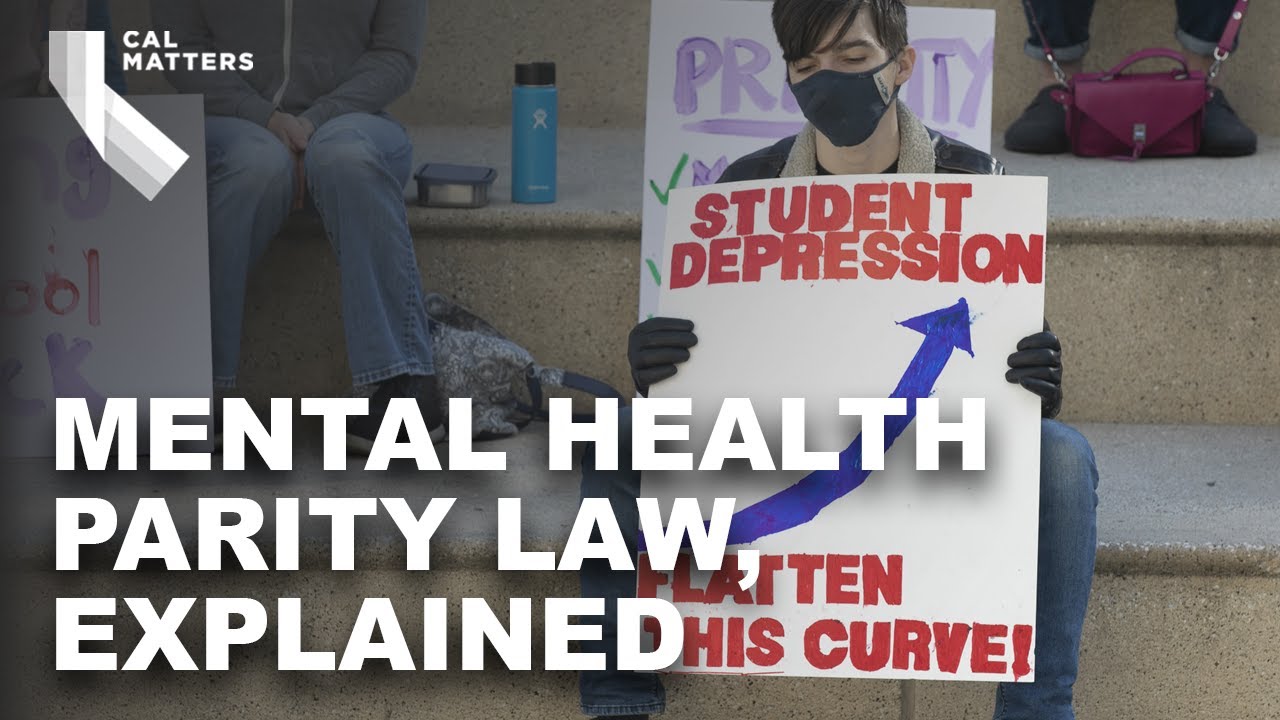Understanding Mental Health Parity Laws
Mental health parity laws are essential pieces of legislation that create a level playing field for those seeking treatment for mental health issues or substance use disorders. Particularly, the Mental Health Parity and Addiction Equity Act (MHPAEA), enacted in 2008, aims to ensure that insurance providers treat mental health and addiction treatment similarly to physical health services. This means that if you have insurance, you should have comparable access—financially and logistically—to treatment for addiction just as you would for a broken bone or heart surgery.
Unfortunately, despite these laws, many individuals still struggle to receive the care they need. Understanding your rights under mental health parity laws is vital, especially for families affected by addiction. These laws provide a framework that, when followed, sets the stage for fair treatment, allowing families like the Johnsons to access critical support.
For parents and guardians, navigating this system can feel like a marathon. Support organizations like Mothers Against play a pivotal role in helping families champion their rights. By staying well-informed about mental health parity laws, families can advocate more effectively on behalf of their loved ones battling addiction.
The Impact of Mental Health Parity Laws: Top 5 Areas to Consider
It’s disheartening, but even with the advancements in mental health parity laws, coverage gaps remain a real issue. A staggering report from the National Institute on Drug Abuse reveals that around 21 million Americans need substance use treatment, but only 10% actually receive it due to restrictive insurance policies. Barriers still exist, leaving families to bear a crushing burden when a loved one seeks help.
On a brighter note, enforcement of mental health parity laws can lead to remarkable improvements in care access. Take Massachusetts, for example—hospitals there have expanded outpatient services significantly. When mental health parity laws are actively enforced, families like the Smiths can find timely, high-quality care for their loved ones.
Companies today are required to review their health insurance offerings to ensure compliance with mental health parity laws. Organizations like Google and Microsoft have set a standard by implementing comprehensive mental health benefits. This change reflects a growing acknowledgment that maintaining employee wellbeing through mental health care is just as critical as overall productivity.
Despite the existence of these laws, effective enforcement continues to be a struggle. The U.S. Department of Labor is tasked with ensuring that insurance providers comply, but many families, like the Smiths from Ohio, still face uphill battles. Their denied claims illustrate a disconnect between the intent of mental health parity laws and the realities of navigating the system.
As we move into 2024, new initiatives aim to bolster mental health parity laws further. For instance, in California, lawmakers are working to impose stricter penalties on insurers who breach parity standards, underlining the ongoing need for legislative vigilance. Advocacy efforts must persist, ensuring that every family receives the comprehensive support they need in the fight against addiction.
| Aspect | Details |
| Definition | Mental Health Parity Laws ensure that insurance coverage for mental health and substance use disorders (MH/SUD) is comparable to that for physical health. |
| Key Legislation | Mental Health Parity and Addiction Equity Act (MHPAEA) |
| Effective Date | Enacted in 2008, with further rules and clarifications issued in 2024 |
| Financial Requirements | Co-pays, coinsurance, and out-of-pocket expenses for MH/SUD benefits cannot exceed those for medical/surgical benefits. |
| Treatment Limitations | Limitations on visits for MH/SUD cannot be stricter than those applied to medical/surgical benefits. |
| Federal Requirements | Insurance plans must not impose visit limits or frequency restrictions for mental health services that differ from those for physical health treatments. |
| Consumer Protections | Recent rule updates aim to strengthen protections, ensuring individuals can seek treatment without facing greater burdens. |
| Employer Concerns | Employers may worry that reduced financial barriers will increase the number of individuals seeking mental health services, including those not severely impacted. |
| Potential Violations | Plans that impose different limitations or higher costs for mental health services may be violating federal parity laws. |
| Importance | Ensures equitable access to necessary mental health and addiction treatment, ultimately aiming to reduce stigma and improve health outcomes for affected individuals. |
Real-World Implications of Mental Health Parity Laws
The implications of mental health parity laws extend far beyond legislation; they offer hope and tangible improvements in the lives of families facing addiction challenges. Consider the impact on families like the Johnsons who suddenly found themselves struggling with their son’s addiction. With the help of expanded insurance coverage, they accessed a dual-diagnosis program that offered both mental health and addiction treatment—all because of the protections provided by these laws.
Imagine being able to break the cycle of despair and guilt, thanks to these laws creating new opportunities for care. This is the reality that many families experience when they finally receive the help they’ve desperately sought. The stories of families using these benefits highlight that the effects of mental health parity laws ripple out, enhancing community health as well.
Access To treatment—whether through inpatient rehab or outpatient counseling—should never hinge on a family’s financial situation. Mental health parity laws are designed to bridge that gap, but it’s crucial to continue uplifting their importance through advocacy and awareness, ensuring that they serve the people they were intended for.
The Role of Advocacy Groups
Organizations like Mothers Against are on the frontlines, raising awareness about the significance of mental health parity laws. They provide a sounding board for parents who are struggling, offering support and guidance to navigate these overwhelming waters. By amplifying the voices of families and holding policymakers accountable, advocacy groups ensure that the conversation about mental health and addiction treatment remains alive.
Through various campaigns, events, and testimonials, these organizations shine a light on the importance of accessible care. They transform individual struggles into collective action, creating a community of support for families grappling with addiction. Raising awareness about issues such as safe injection Sites or the decriminalization Of Drugs helps frame these conversations and pushes for system-wide reforms.
Ultimately, advocacy does more than change laws—it changes lives. It empowers families, provides education, and fuels a crucial movement towards a more equitable health care system for mental health and addiction.
Envisioning a System that Works: The Future of Mental Health Care
As 2024 unfolds, it’s essential to recognize that mental health parity laws stand as a significant milestone in the journey toward equitable healthcare. However, understanding that this journey is ongoing is equally important. Continuous advocacy, legislative support, and community engagement become paramount in dismantling the barriers that still exist in accessing care.
We need to come together to foster change. By unifying our voices, drawing on our experiences, and advocating for those who have lost their way, we can help shape a future where mental health and addiction services are no longer an afterthought but an integral part of health care. When we remember those lost, like Edward Mordrake and countless others, we ignite a fire for change that cannot be extinguished.
Together, we can strive for a world where every individual grappling with mental health or addiction challenges receives the comprehensive support they deserve. Harnessing the protective framework of mental health parity laws will be vital in fundamentally changing the landscape of healthcare for future generations. Our children—those we love so dearly—deserve nothing less.
Mental Health Parity Laws: Fun Trivia and Interesting Facts
Mental health parity laws are fascinating and crucial for promoting mental health care access. They attempt to level the playing field for mental health services compared to physical health. In fact, have you heard about the impact of these laws since their inception? The Mental Health Parity and Addiction Equity Act (MHPAEA) passed in 2008. This act requires insurance companies to provide equal coverage for mental health treatments as they do for physical health. It’s pretty incredible how such legislation can change lives, almost like a key in a lock, unlocking better care. Speaking of locks, if you’re looking to invest in a home for your family’s future, you might want to check the latest home financing rates to find the best deal.
Now, mental health has found its way into broader conversations—just look at the recent discussions sparked by events like the tragedy at 1122 King Road. Such incidents underline the dire need for more attention to mental health resources. Did you know that many people who struggle with addiction or severe mental health issues don’t seek help due to stigma or lack of access? Mental health parity laws actively aim to dismantle these barriers, making care more accessible. And with the rise of various organizations, like Mll, working toward fighting addiction and offering solutions, we can see how community efforts can align with legislative movements.
Transitioning to another interesting tidbit, the success of these laws can also vary across different states. Some states have been proactive in enforcing these laws, while others lag behind. The disparities present a unique challenge for families trying to navigate mental health care across state lines. Remember the importance of advocacy in this arena—families and supporters can unite to press for better policies, making mental health care a priority. In the face of it all, ongoing education and community involvement remain key to unlocking the potential of mental health parity laws to transform lives for the better. So, let’s band together and advocate for equitable treatment for all, ensuring that nobody feels alone in their struggles.

What is mental health parity law USA?
Mental health parity law in the USA aims to ensure that insurance coverage for mental health and substance use disorders is equal to that for physical health. This means your health plan should treat both types of services fairly, without placing extra barriers on mental health treatment.
What is a parity violation for mental health?
A parity violation occurs when your health plan imposes stricter limits or costs on mental health services than on physical health services. For example, if you have fewer therapy visits allowed compared to physical health appointments, that’s not playing fair.
What are parity laws?
Parity laws are regulations that require health insurance plans to provide equal treatment for mental health and substance use disorders as they do for other medical conditions. They help ensure people can access the care they need without facing higher costs or tougher restrictions.
What is the final rule of Mental Health Parity?
The final rule of Mental Health Parity reinforces the principle that insurance coverage for mental health and substance use treatments must be at least as generous as coverage for medical/surgical services, helping to close gaps in access and affordability for patients.
What is the best example of a Mental Health Parity?
A great example of mental health parity is when a health insurance plan allows an equal number of visits for mental health therapy as it does for physical therapy or other medical treatments. If you get 20 visits for physical therapy, you should likewise get 20 for mental health.
What are the Mental Health Parity amendments?
The Mental Health Parity amendments refer to updates made over the years to improve and enforce the original parity laws, ensuring better compliance and expanding the scope of mental health and substance use disorder services covered by health plans.
How is parity violated?
Parity can be violated in various ways, like setting different limits on visits for mental health services, charging higher copays for mental health treatment, or requiring different approval processes compared to other medical treatments.
What is an example of a parity?
An everyday example of parity would be if an insurance plan covers 50% of the costs for surgery and also covers 50% for mental health care; both types of care have the same financial responsibility attached to them.
What are the Mental Health Parity diagnoses?
Mental health parity diagnoses typically include a range of conditions, like depression, anxiety disorders, PTSD, and substance use disorders. These are all considered to need appropriate and equal treatment under the law.
What is the rule of parity?
The rule of parity means that mental health and substance use disorder benefits must be aligned with medical benefits, ensuring no greater restrictions or higher costs are placed on the former compared to the latter.
What are the three parity conditions?
There are three parity conditions that must be met: limitations on the number of visits must be the same for mental and physical health, out-of-pocket costs like copays must match, and there can’t be stricter prior authorization requirements for mental health services.
What is the Samhsa Mental Health Parity Act?
The SAMHSA Mental Health Parity Act works to enhance access to mental health and substance abuse treatment by reinforcing existing parity regulations and ensuring people can get needed care without facing unnecessary hurdles.
What is the golden rule in mental health?
The golden rule in mental health suggests treating others how you’d like to be treated. This principle can foster empathy and understanding, especially for those struggling with mental health challenges.
What does the Mental Health Parity Act of 1996 cover?
The Mental Health Parity Act of 1996 laid the groundwork for ensuring that insurance coverage for mental health treatments was comparable to physical health treatments, mandating that health plans cannot impose stricter limits on mental health services.
When was the mental health parity law passed?
The mental health parity law was first passed in 1996, but it has since been revised and expanded in the years following to address ongoing issues and ensure better access to mental health care.
What is the meaning of parity in law?
In law, parity means equality or equivalence in treatment, services, or costs, ensuring that terms and conditions for mental health care are comparable to those for physical health care.
Why was the Mental Health Parity Act created?
The Mental Health Parity Act was created to prevent discrimination against mental health and substance use disorder treatments, helping to remove barriers that often kept people from accessing necessary care.
What is the Mental Health Parity Act 2007?
The Mental Health Parity Act of 2007 expanded on earlier laws to offer greater protections and ensure that health plans provide fair access to mental health and substance use disorder services, pushing for better compliance in the industry.
What is the mental health Act in the United States?
In the United States, the Mental Health Act refers to various laws and regulations that govern the treatment of individuals with mental health issues, aiming to protect their rights and ensure they receive appropriate care and support.




























